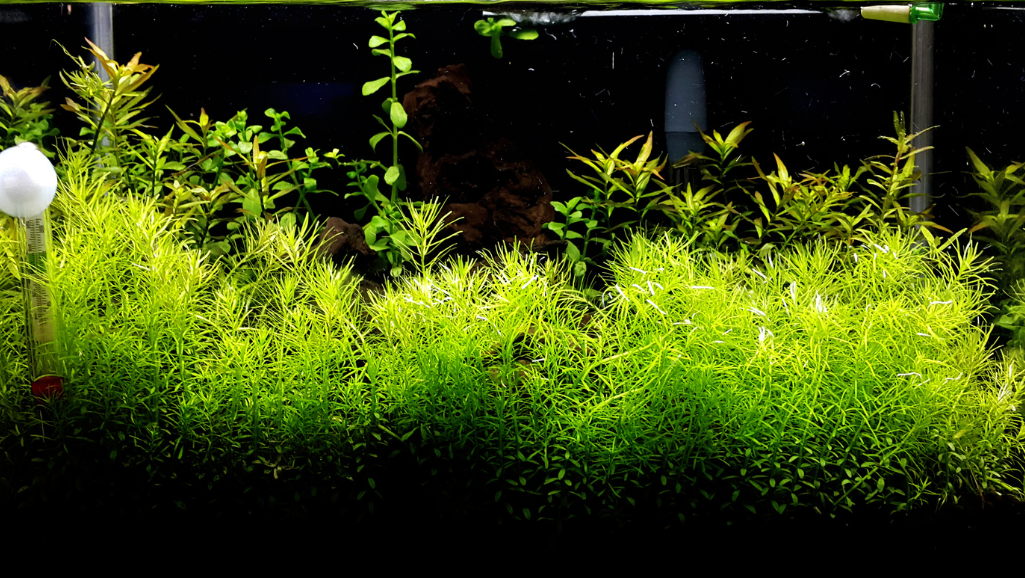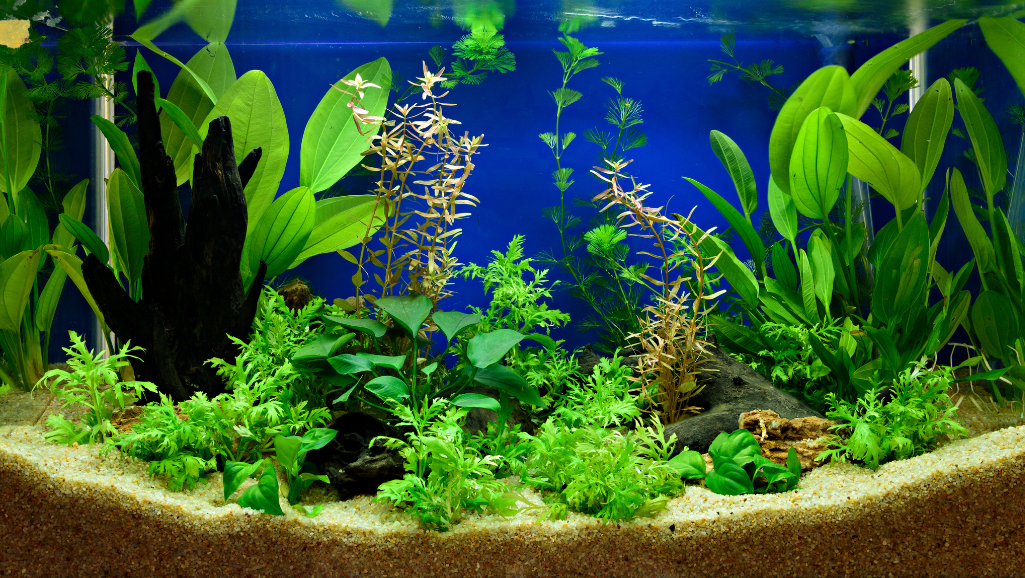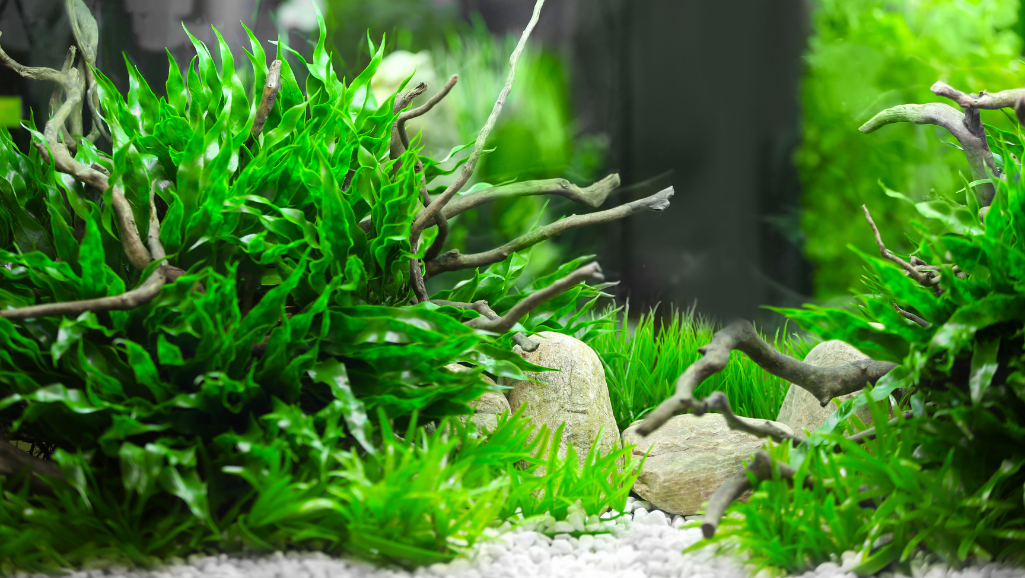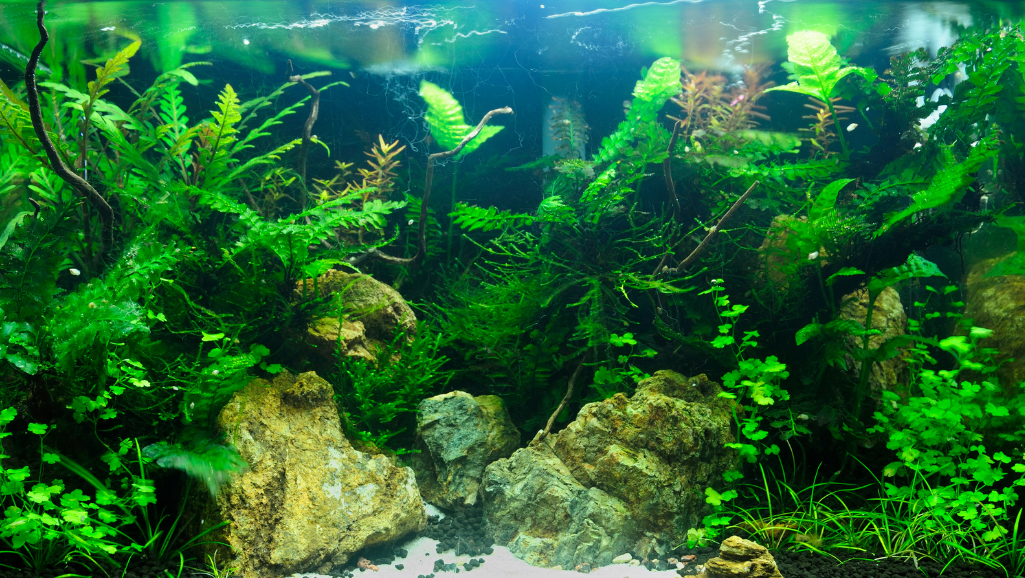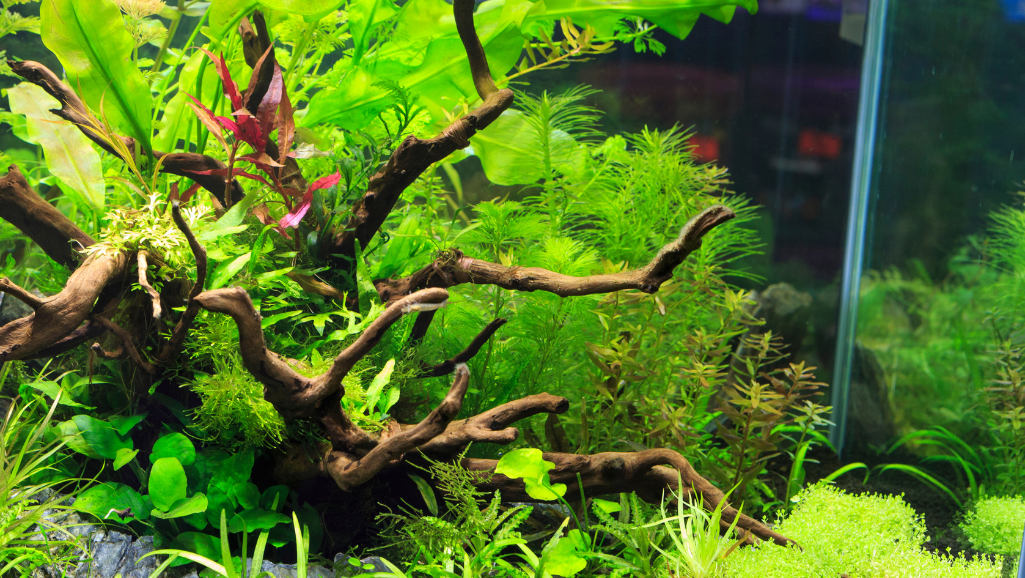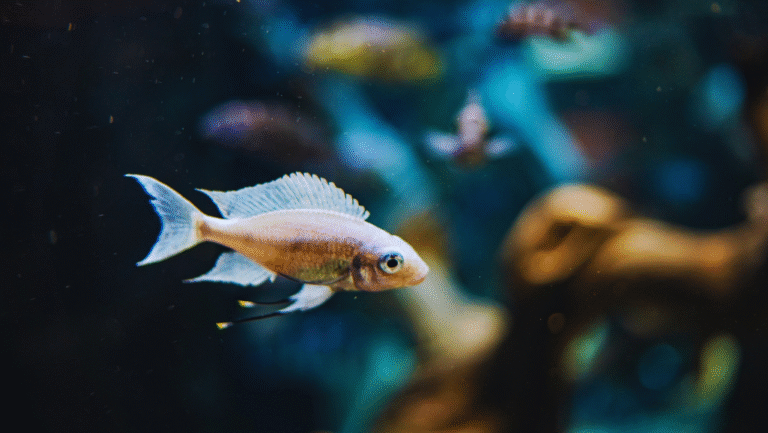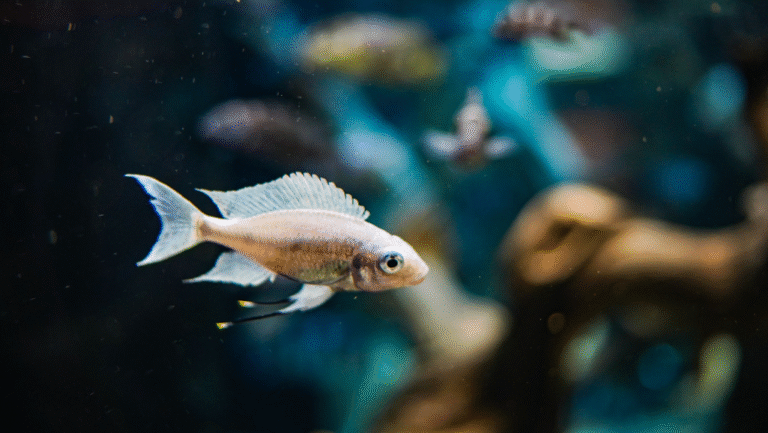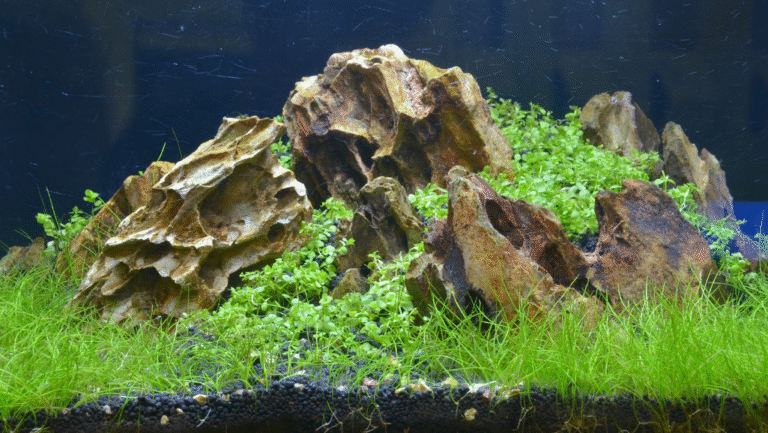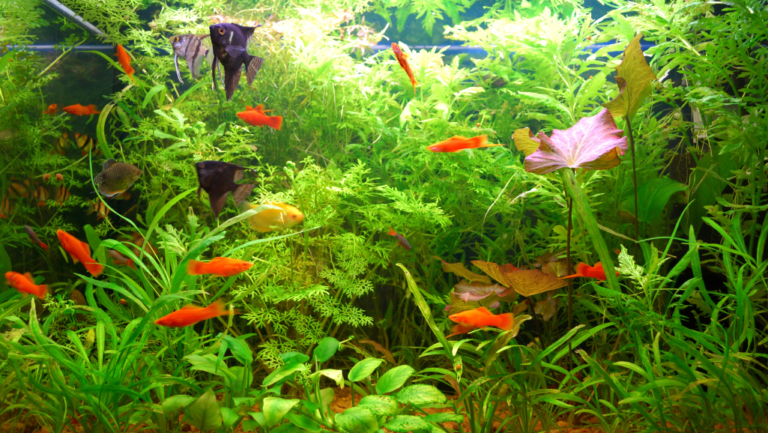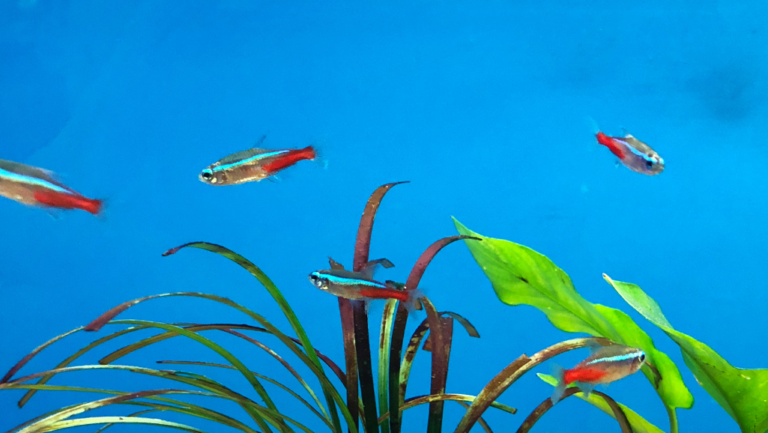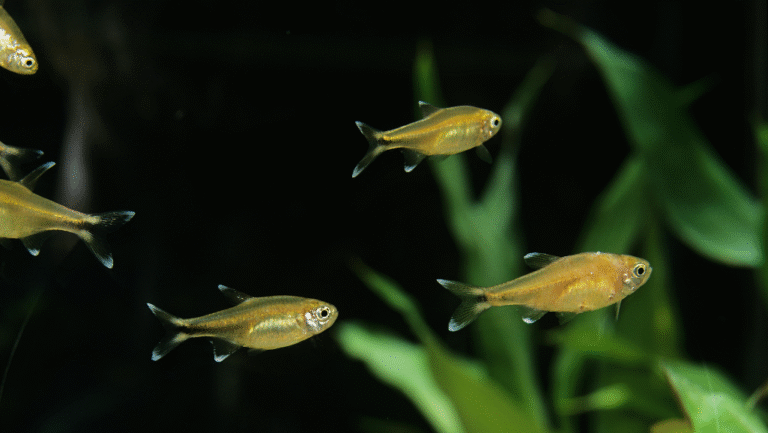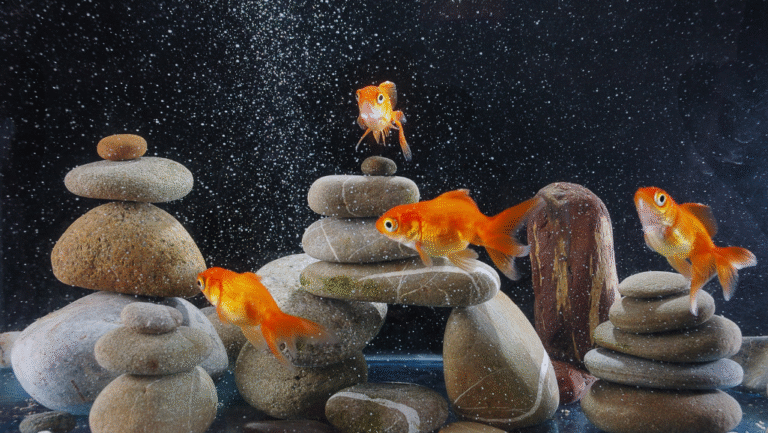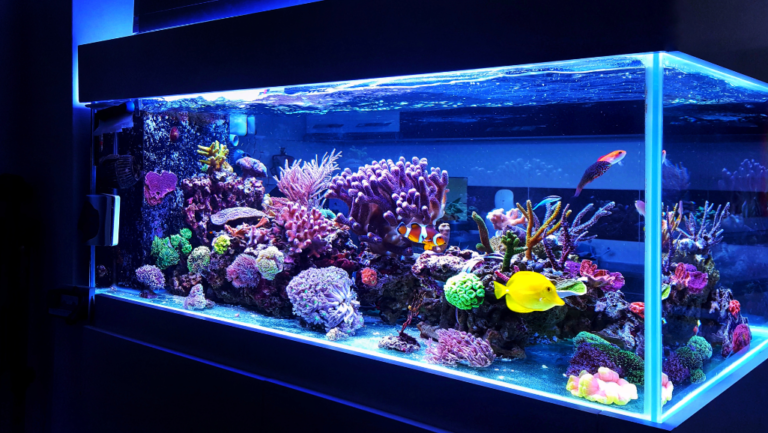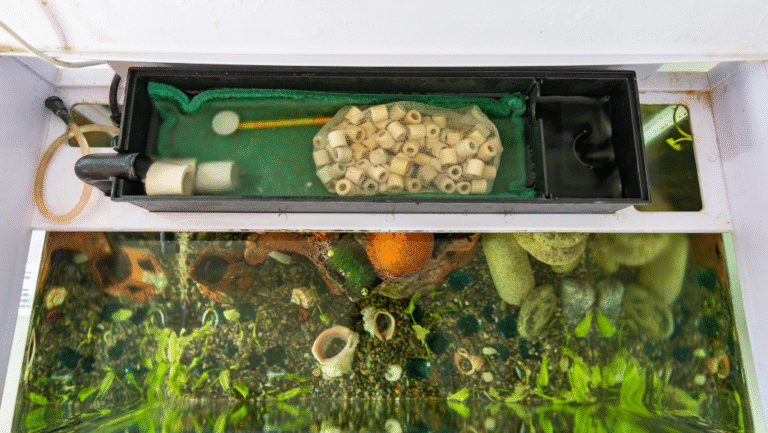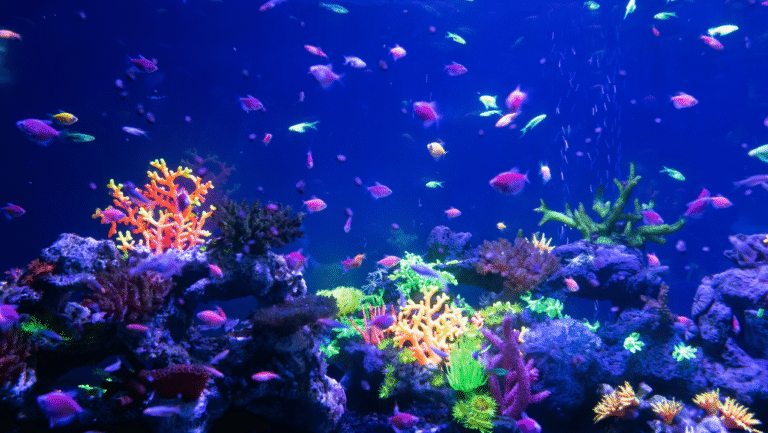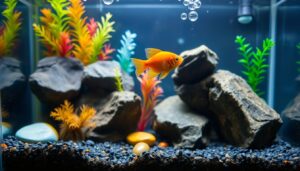Explore the world of aquatic plants and see how they can make your fish tank thrive. This guide will show you the top aquarium plants for freshwater tanks. You’ll learn about their benefits, types, care, and how to create a beautiful underwater garden. This garden will support your fish’s health and happiness.
Live aquatic plants are key to a balanced and healthy aquarium. They add beauty and interest to your tank. They also help with oxygen, nutrient absorption, and create natural habitats for fish. Whether you’re new or experienced, the right plants can greatly improve your aquarium’s health and look.
In this guide, we’ll explore aquarium plants in depth. We’ll cover low-light and oxygenating plants. You’ll get the knowledge and tools to add them to your fish tank. Get ready to create a lush, vibrant, and thriving underwater oasis for your fish.
Key Takeaways
- Best Plants Good For Fish Tanks
- Understand the importance of live plants in maintaining a healthy aquarium ecosystem
- Explore the different types of aquatic plants suitable for freshwater tanks
- Discover the top 10 plants that are good for fish tanks
- Learn how to choose the right plants based on your fish species and tank setup
- Gain insights into proper care, maintenance, and aquascaping techniques for aquarium plants
Introduction to Aquatic Plants and Their Benefits
Adding live aquatic plants to your fish tank has many benefits. They make your tank look better and help keep the water clean. This is good for your fish’s health and well-being.
Importance of Live Plants in Aquariums
Live plants in your aquarium are very important. They help in several ways:
- Natural filtration: Plants take in nutrients and waste, acting as a natural filter.
- Oxygenation: Plants make oxygen through photosynthesis, keeping the water oxygen-rich.
- Shelter and security: Plants give fish places to hide and feel safe, reducing stress.
- Algae control: Plants compete with algae for nutrients, helping to keep algae in check.
“Aquatic plants are not just decorative elements; they are essential components of a thriving aquarium ecosystem.”
Effects on Water Quality and Fish Health
Live plants in your tank can greatly improve water quality and fish health. Oxygenating plants keep oxygen levels stable, which is good for your fish. They also take in harmful substances like ammonia and nitrates.
Plants create a natural home for your fish and improve the water. This leads to less stressed and healthier fish. Your fish will be more vibrant and live longer.
Types of Aquatic Plants for Freshwater Tanks
Setting up a thriving freshwater aquarium needs the right aquarium plants. Live aquatic plants make your tank look great and keep it healthy for your fish. We’ll look at the different kinds of plants good for freshwater tanks.
Aquatic plants fall into three main types: stem plants, floating plants, and rooted plants. Each type has its own benefits, helping you make a beautiful and diverse tank.
Stem Plants
Stem plants are loved for growing fast and adding height to your tank. They have a main stem with leaves and branches. Examples include:
- Bacopa caroliniana
- Rotala rotundifolia
- Hygrophila polysperma
These plants are great for groups or as background plants to add depth.
Floating Plants
Floating plants float on the water’s surface. They offer shade and a safe place for fish and help keep the water clean. Popular ones are:
- Duckweed
- Water Lettuce
- Frogbit
They’re easy to care for and spread quickly, making your tank look lush.
Rooted Plants
Rooted plants sit on the bottom and are the base of your tank’s design. They come in many shapes, sizes, and colors. Examples are:
- Amazon Sword
- Cryptocoryne
- Vallisneria
Many rooted plants do well in low light, perfect for beginners or tanks with less light.
“A well-planted aquarium is not just beautiful but also healthy for your fish.”
When picking plants for your tank, think about the light they need, how fast they grow, and if they get along with your fish. Mixing stem, floating, and rooted plants makes your aquarium beautiful and diverse, a joy to watch.
Top 10 Plants Good for Fish Tanks
Choosing plants good for fish tanks can be fun. Live plants make your aquarium look great and help your fish. Here are the top 10 plants for a beautiful and healthy tank.
Anubias
Anubias is loved by many for being easy to care for. Its dark green leaves make your tank look natural. You can attach it to rocks or driftwood, making it easy to arrange.
Java Fern
Java Fern is great for beginners. It grows well in many water conditions. Its unique leaves and slow growth make it easy to care for.
“The Amazon Sword Plant is a classic choice for aquariums, providing a lush and vibrant backdrop for your fish.”
Amazon Sword
The Amazon Sword Plant has big, broad leaves. It grows fast, filling your tank with greenery. It’s perfect for big tanks and works well with different light levels.
Water Wisteria
Water Wisteria is a fast-growing plant. It adds a soft, feathery look to your tank. Its leaves help fish hide and oxygenate the water. It’s easy to care for and can be split to grow more.
Other great plants for fish tanks include:
- Cryptocoryne
- Vallisneria
- Java Moss
- Dwarf Sagittaria
- Hornwort
- Bacopa
When picking plants, think about light needs, growth rate, and how well they match your fish. Mixing different plants creates a stunning and healthy home for your fish.
Choosing the Right Plants for Your Fish Species
When picking aquarium plants for your tank, think about how your fish and plants will get along. Different fish behave and like things in different ways. This can affect how well your plants grow and stay healthy.
Some fish love to eat plants. If you have fish like mollies or silver dollars, pick plants good for fish tanks that can handle being nibbled. Anubias and java fern are great for tanks with plant-eating fish because they’re tough.
Compatibility Factors
When checking if your fish and plants will get along, look at a few things:
- Fish size and swimming habits
- Water parameters (temperature, pH, hardness)
- Lighting needs for plants to grow
- What kind of soil plants like to grow in
“The key to a thriving aquarium is finding the right balance between your fish and plants, ensuring they can coexist harmoniously.”
Plant Requirements Based on Fish Behavior
Different fish do different things that can affect your aquarium plants. For example, some fish love to dig and can mess up your plants. For these fish, choose floating plants or ones with strong roots that won’t get pulled up.
If you have calm, gentle fish, you can try more live aquatic plants. Plants like dwarf hairgrass or baby tears are delicate but can make your tank look lush. They’re safe from damage by active fish.
How to Care for Aquarium Plants
Caring for aquarium plants is key to a healthy tank. The right conditions help your live aquatic plants grow well. This makes your tank look great and keeps your fish happy. Here’s what you need to know to care for your plants.
Lighting Requirements
Lighting is vital for your plants to grow. Some plants need a lot of light, while others do well in the dark. Find out what your plants need and get the right light for them.
“The key to success with aquarium plants is to understand their individual lighting needs and provide the right balance of illumination.”
Fertilization Tips
Plants need food to grow, and fertilizers are important. Use liquid fertilizers or special soil to feed your plants. But don’t overdo it, as too much can harm your tank.
Pruning and Maintenance
Keeping your plants trimmed is important. Cut off dead or too-long parts to keep your tank clean. Some plants grow fast and need regular cuts, while others grow slower and need less trimming.
With the right light, food, and care, your tank can become a beautiful garden. This not only makes your tank look good but also helps your fish stay healthy.
Common Challenges with Aquarium Plants
Aquarium plants can make your fish tank look amazing and keep it healthy. But, they also have their own set of problems. Knowing these common issues and how to fix them is key to keeping your plants alive and well.
Algae Growth
Algae growth is a big problem with aquarium plants. It can quickly cover your tank, taking over nutrients and light. To fight algae, keep your tank balanced. This means controlling light, cleaning regularly, and not overfeeding your fish.
Nutrient Deficiency
Live aquatic plants need nutrients to grow well. If they don’t get enough, they might turn yellow, grow slowly, or look unhealthy. To avoid this:
- Choose a good substrate that gives plants what they need
- Use liquid fertilizers made for aquarium plants
- Make sure your plants get enough light and CO2
Pests and Diseases
Aquarium plants can get pests and diseases just like any living thing. You might see:
- Snails eating plant leaves
- Fungal or bacterial infections causing decay
- Parasites that harm plant health
Stopping pests and diseases early is important. Check your plants often, quarantine new ones, and keep water conditions right to lower the risk of problems.
By tackling these challenges early, you can keep your aquarium plants healthy. This will make your tank look great and be good for your fish.
How to Plant and Arrange Aquatic Plants
Planting and arranging aquarium plants is key to a beautiful aquarium. With the right techniques, you can turn your tank into a stunning underwater garden. This garden will benefit your fish and enhance your home decor.
Planting Techniques
When planting live aquatic plants, think about their needs. Some plants, like Java Fern and Anubias, do well attached to rocks or driftwood. Others, like Amazon Sword and Cryptocoryne, need to be planted deep to grow strong roots.
To plant your aquarium plants, follow these steps:
- Gently remove the plant from its pot or packaging
- Rinse the roots to remove any dirt or debris
- If necessary, trim any damaged or excessively long roots
- Create a small hole in the substrate using your fingers or tweezers
- Place the plant in the hole and gently cover the roots with substrate
- Repeat the process for each plant, ensuring adequate spacing between them
Aquascaping Tips for a Beautiful Tank
Aquascaping is the art of arranging plants, rocks, and driftwood for a beautiful underwater landscape. Here are some tips:
- Use the golden ratio (1:1.618) to create a balanced layout
- Place taller plants in the background and shorter plants in the foreground
- Use odd numbers of plants or hardscape elements for a natural look
- Create depth by layering plants and hardscape materials
- Leave open spaces for fish to swim and explore
“The key to a stunning aquascape is finding the perfect balance between plants, hardscape, and open space. Experiment with different layouts until you find one that showcases the beauty of your aquarium plants and the natural behavior of your fish.”
Mastering planting techniques and aquascaping principles will help you create a thriving aquarium. This aquarium will showcase the beauty of live aquatic plants and provide a healthy home for your fish.
The Role of Substrates in Plant Growth
The substrate is vital for aquarium plants. It holds the plants in place and gives them the nutrients they need. Picking the right substrate is essential for a healthy plant environment.
Types of Substrates
Many substrates are available for aquariums, each with its own benefits. Here are a few:
- Gravel: It’s cheap and simple to care for. But, it might not give plants enough nutrients.
- Sand: It looks natural and is soft on fish. Adding root tabs can help plants grow.
- Soil-based substrates: These, like Aqua Soil or Eco-Complete, are full of nutrients and good for plants.
Choosing the Right Substrate for Your Plants
When picking a substrate, think about these things:
- Plant needs: Find out what your plants like. Some need finer, others coarser substrates.
- Nutrient content: Choose substrates rich in nutrients or add root tabs or fertilizers.
- Compatibility with fish: Think about your fish’s likes and how they behave. Some prefer softer substrates.
The right substrate is key for a thriving underwater garden. It supports and nourishes your plants.
Understanding substrates and picking the right one helps your aquarium plants grow well. This makes your aquarium more beautiful.
The Impact of Fish on Plant Health
When picking aquarium plants for your tank, think about how fish affect your plants. Different fish interact with plants in unique ways. Knowing these interactions helps you build a balanced and thriving tank.
Herbivorous Fish Considerations
Some fish, like plecos and cichlids, eat plants. They see your plants as food. This can harm your plants quickly. To keep your tank lush, pick plants that can handle these fish, such as:
- Anubias
- Java fern
- Hornwort
- Marimo moss balls
“Striking a balance between the needs of your fish and the requirements of your live aquatic plants is key to creating a thriving aquarium ecosystem.”
How Fish Interact with Plants
Fish also interact with plants in other ways. Some, like bettas, rest on leaves. Others, like tetras, use plants for hiding and spawning. By choosing plants that fit your fish’s needs, you improve their life and your tank’s look.
Success comes from research and watching your tank. As you learn, you’ll find the right balance. This will make your aquarium both healthy and beautiful.
Conclusion: Enhancing Your Aquarium with Plants
In this guide, we’ve delved into the world of aquarium plants. They bring beauty and help keep your fish tank healthy. Live aquatic plants improve water quality and support fish health.
Summary of Key Takeaways
This guide has covered many important topics. We’ve talked about the types of plants for freshwater tanks and how to care for them. You now know how to pick the best plants for your tank and keep them thriving.
By choosing the right plants like Anubias, Java Fern, and Amazon Sword, your tank can become a lush paradise. Proper lighting, fertilization, and care are key. This will make your underwater world vibrant and healthy for your fish.
Encouragement to Experiment with Aquatic Flora
Starting your aquarium plant journey? Remember, trying new things is important. Experiment with different plants and arrange them in creative ways. Watch how they interact with your fish.
With patience and a love for learning, you can turn your tank into a stunning natural display. So, dive in and explore the world of aquarium plants. Let your aquatic paradise grow and flourish!
